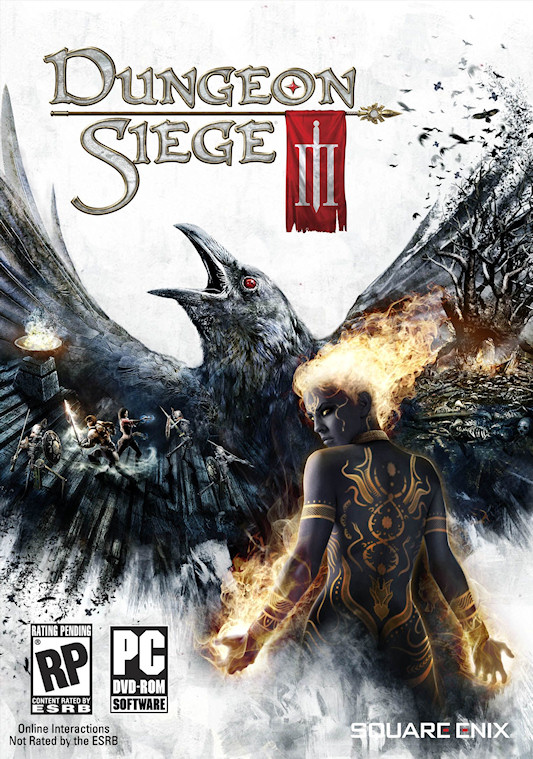Dungeon Siege III Preview
-
Category: PreviewsHits: 17385

Article Index
Page 2 of 5
I didn't see any way to manually adjust my character's stamina, agility, or will (other than to don an item that affected my attributes), and it would have been nice to see the addition of some non-combat abilities, but it looks like we're still going to get enough customization across these three categories of development to keep us satiated. The specialization options are fairly diverse, and since you'll never receive enough points to max out all of the proficiencies and talents (the build I was shown had a level cap of 30), there will most likely be a variety of interesting builds that people will be coming up with. The only real issue I foresee is that experimentation will be a bit difficult, as there's currently no way to respec in the game. If you've ever played an Obsidian-developed RPG before, then you should have a pretty good idea of what to expect from the dialogue. When you speak to an NPC, the camera zooms in on the conversation (which serves as a great opportunity to check out the impressive character models and lip synching technology) and you're given as many as four dialogue options to pick from. The options are all fairly short, though, so what you choose will not be directly reflected when your character speaks. For example, when being offered a quest by a friendly fisherman, I chose a response of "Who are you?". Instead, Anjali spouted out something like "I need to know more about you before I can commit to this task."
I didn't see any reason to think that the game's dialogue options are influenced by a character's attributes, talents, or proficiencies, but during my interview with George Ziets, the creative lead confirmed that at least some of the choices we make during quests and in dialogue will have consequences later on. I also didn't see any way to trigger dialogue with my companions outside of scripted cutscenes; however, they do provide a small amount of banter as you travel through Ehb. When fighting my way through one of the game's dungeons, for instance, Lucas made a few remarks about the history of the location we were in and even suggested that I try pulling a lever to lower a bridge when I reached an otherwise impassable river.
There's something to be said about the ample amounts of lore and history that Obsidian has packed into this game, too. Even though I played through both Dungeon Siege and Dungeon Siege II on multiple occasions, I honestly couldn't tell you a whole lot about their settings or storylines (other than they both took place in Ehb). With Dungeon Siege III, however, there's a designated lore tab in the main menu that was already brimming with information shortly into the game. As I walked through one of the earlier keeps, there was an assortment of notes I could read, bookcases I could examine, and desks full of papers that I could sift through. I'm sure there will be plenty of people who spend little to no time in the game's lore section, but I for one am glad it's there.
Combat, Loot, and Inventory Management
Since your character's stance determines which weapon you're wielding and which talents are mapped to your primary controls, it's going to be the most important decision you make during combat. Playing Anjali as a kicking, staff-swinging human is a much different experience than playing her in the ranged combat-oriented fire elemental stance, so you'll always want to make sure that you're in the most useful stance for the environment that you're in. It's also important to switch between stances to make sure your health and focus (mana) don't get too low - you might find that some of your abilities are great for keeping enemies at bay, but only the game's base attacks will replenish your focus. There are also green (health) and blue (focus) orbs to be nabbed from fallen enemies, but based on my experience, you'll need to come up with a good rhythm of stance switching to maintain a healthy character. Remember, there are no potions!
In addition to your repertoire of attacks, you can also make use of blocks and dodges. Dodging saved me from certain death on a couple of occasions and blocking tends to be very useful, as it will cause the blocked attack to damage your focus rather than your health. Regardless of how often you mix up your attacks, blocks, and dodges, you'll always know how effective your strategy is, as the screen is filled with hovering damage numbers and large screen-shaking "CRITICAL" alerts whenever a critical hit is scored.


